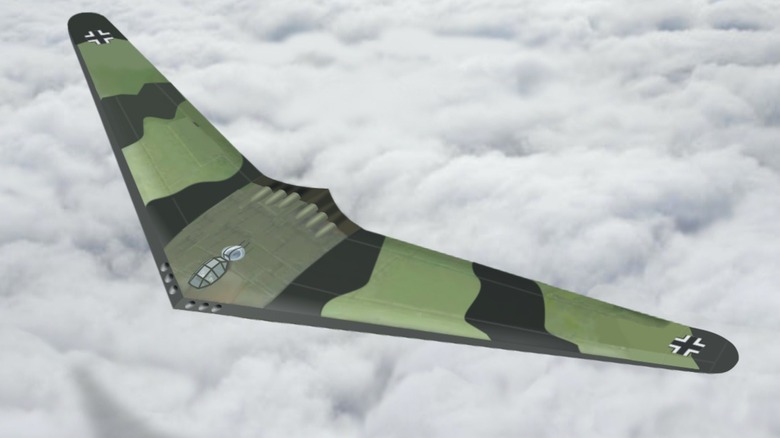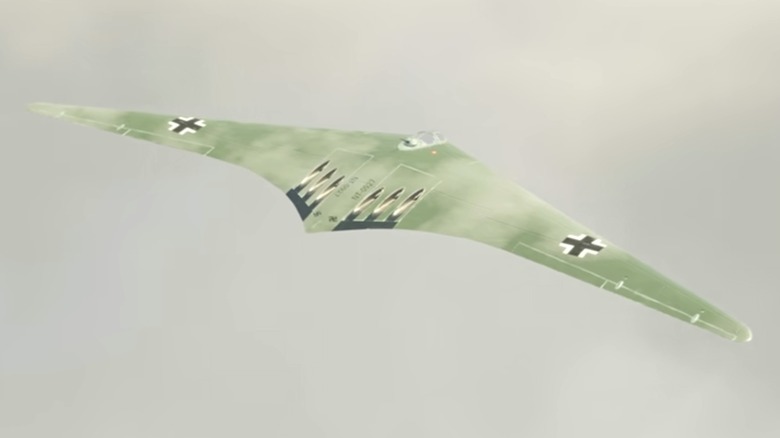The Massive Bomber The Nazis Planned To Use To Attack New York City
The German military under the Nazi party was known for weapons innovation on a ridiculously grand scale. The Germans invented some of the craziest military machines ever during their rise to power and onslaught on the rest of Europe and Africa. The biggest gun ever used in combat was built by the Nazis, and it's clear the Third Reich had a 'go big or go home' mentality in its weapons designs. This included massive tanks, humongous artillery, and the designs for a gargantuan bomber. The Nazis were also pioneers in jet design, sending the Messerschmitt Me 262 into battle in 1944. Another planned jet that was designed and put into the development phase was the Horten H.XVIII, known as the "Amerika Bomber." The jet was designed by brothers Walter and Reimar Horten for the Nazis and was based on their previous design, the Horten Ho 229.
Only a handful of those were built, and the Horten H.XVIII was designed for a single purpose: to bomb New York City. This was in line with Adolf Hitler's desire to destroy the city, which he had harbored since before the war began. At the time, flying a jet across the Atlantic Ocean and back to Europe was a lot harder than it is today. The Horton Brothers designed the bomber with multiple jet engines on a massive single-wing aircraft, hoping it would impact the United States and take pressure off the Nazis on the European front.
The Horten X.VIII was never built
Luftwaffe Commander-in-Chief Hermann Göring wanted to fulfill Adolf Hitler's goal of having a bomber capable of crossing the Atlantic Ocean and returning after bombing New York and other military targets. The Hortens chose a flying wing design, as this offered less drag, a smaller radar signature, and the ability to fly at faster speeds than traditional fixed-wing aircraft. They ultimately settled on their second design, the H.XVIIIIB model. It would have carried four early Junkers Jumo 004 turbojet engines attached to pods beneath the wing.
The H.XVIIIIB would have weighed 35 tons with a wingspan of 40 meters (131 feet, 4 inches), and carried three crew members. Its maximum speed was to be 528 mph, which it could reach at altitudes up to 52,000 feet. Had it worked as planned, it would have had a flight endurance of 27 hours, easily giving it the ability to fly to New York and back. Plans were in motion in 1945 to construct the aircraft, but fortunately for New Yorkers and the rest of the Allies, the Germans were defeated before they could build it.
Like Germany's Graf Zeppelin aircraft carrier and many other planned military hardware developed during WWII, the Horten H.XVIII only exists in renderings like the photos above. Had the Nazis also completed their plans to build nuclear weapons, the bomber might have carried such a device to the U.S. Instead, the H.XVIII's designs likely aided Germany's enemies after the Nazi defeat. Not long after the war ended, Northrop developed the YB-49, a similar flying wing powered by six turbojet engines. It never entered into service, but its design shares many similarities with another aircraft that came later: the B-2 Spirit stealth bomber.

